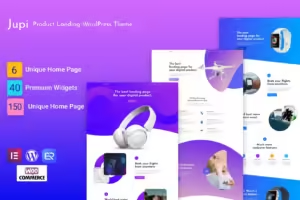Table of Contents
Hey there, web enthusiasts! Are you captivated by the magic behind those visually alluring and user-friendly websites? Ever wondered how these interactive experiences come to life? Look no further! Today, we’re diving deep into the world of front-end web development, equipping you with the knowledge to not only appreciate, but potentially create, these digital masterpieces.

Unveiling the Fundamentals: HTML, CSS, and JavaScript
Front-end development is the cornerstone of crafting a website’s user interface (UI). It’s the artistry and science combined, transforming static designs into dynamic experiences. But what breathes life into these interfaces? Three essential languages:
HTML (Hypertext Markup Language)
Imagine HTML as the skeleton of a website, providing structure and organization to the content. It defines elements like headings, paragraphs, and images.
CSS (Cascading Style Sheets):
Think of CSS as the stylist, adding visual flair to the HTML structure. It controls the website’s appearance, from fonts and colors to layouts and animations.
JavaScript:
JavaScript is the spark that ignites interactivity. It enables features like dynamic content updates, user input handling, and animations, making the website feel alive.
Mastering the Toolkit: Frameworks for Efficiency
While wielding the core languages is essential, front-end development frameworks can supercharge your workflow. These frameworks provide pre-built components and libraries, streamlining development and ensuring consistency across projects. Here are some of the big players:
React.js
Renowned for its flexibility and component-based architecture, React is a popular choice for building complex and scalable web applications
Angular
Offering a comprehensive framework with built-in features like dependency injection and routing, Angular is ideal for large-scale, enterprise-level applications.
Vue.js
Vue prides itself on being approachable and versatile. It’s perfect for building interactive UIs and seamlessly integrating with existing projects.
Responsive Design : Tailoring Websites for Every Screen
In today’s mobile-first world, ensuring flawless website performance across all devices is paramount. Responsive design is the answer, employing techniques like media queries to adjust layouts dynamically based on screen size. This guarantees a seamless user experience, no matter how users access the website.
Optimizing for Speed and Performance: Keeping Users Engaged
Website speed is king! A slow-loading website frustrates users and hurts your search engine ranking. Front-end developers employ techniques like minification, compression, and lazy loading to optimize website performance. Additionally, Content Delivery Networks (CDNs) ensure fast and reliable content delivery across geographical locations.
Accessibility: Building for Everyone
Inclusive design is not just a trend; it’s a necessity. Front-end developers play a crucial role in crafting websites accessible to everyone, regardless of ability. By adhering to WCAG (Web Content Accessibility Guidelines) and implementing semantic HTML and aria attributes, developers can create user interfaces that cater to diverse needs, fostering inclusivity and user satisfaction.
SEO for Front-End Developers: Climbing the Search Engine Ladder
Did you know front-end developers can significantly impact a website’s search engine visibility? By incorporating semantic HTML tags, descriptive metadata, and structured data markup, developers enhance a website’s crawlability and indexability for search engines. This translates to increased organic traffic and improved user engagement.
The Rewarding Path to Front-End Mastery
Becoming a front-end developer is an exciting journey fueled by dedication, passion, and a continuous learning mindset. Whether you’re self-taught or pursuing formal education, honing your skills through hands-on projects and real-world experience is key to success. Numerous online courses, tutorials, and books cater to beginners and experienced developers alike, empowering you to embark on this rewarding career path.
Ready to Start Building?
The world of front-end development offers endless possibilities for creativity, problem-solving, and professional growth. By mastering the core languages, leveraging frameworks, and embracing best practices, you can unlock a world of opportunity to craft captivating digital experiences. So, are you ready to take the first step?
Frequently Asked Questions (FAQ)
Q: What skills do I need to become a successful front-end developer?
A: Proficiency in HTML, CSS, and JavaScript is essential. Strong problem-solving, communication, and design thinking skills are valuable assets as well.
Q: How can I stay updated with the latest trends?
A: Stay active in online communities, attend workshops and conferences, and follow industry blogs and thought leaders.
Q: What are some challenges faced by front-end developers?
A: Browser compatibility, performance optimization, and balancing creative vision with technical constraints are common hurdles.
Q: Are there resources available for learning front-end development?
A: Absolutely! There’s a wealth of resources available to cater to all learning styles and preferences. Here are a few options to get you started:
- Online Courses: Platforms like –Headfree Academy offer a vast array of beginner-friendly to advanced front-end development courses.
- Interactive Tutorials: Websites like Codecademy, FreeCodeCamp, and Scrimba provide interactive coding tutorials with gamified elements to make learning engaging.
- Books: Classic books like “Don’t Make Me Think” by Steve Krug and “Eloquent JavaScript” by Marijn Haverbeke offer timeless insights into web development and JavaScript respectively.
- Documentation: The official documentation for HTML, CSS, and JavaScript is a valuable resource for in-depth understanding and reference.
Q: What career opportunities are available for front-end developers?
A: Front-end development opens doors to a diverse range of careers. Here are some popular options:
- Web Developer: The most common role, focusing on building and maintaining websites and web applications.
- UI/UX Designer: Collaborates closely with front-end developers to craft user interfaces that are not only visually appealing but also intuitive and user-friendly.
- Front-End Engineer: A more technical role, responsible for the performance, scalability, and maintainability of the front-end codebase.
- Freelance Developer: Work independently for various clients, taking on projects that suit your interests and skillset.
Web Development Services by Yolopment
| Web Designing | Web Development | Apps Development |
|---|---|---|
| Ecommerce Web Design | CMS Web Development | IOS App Development |
| Custom Web Design | Joomla Web Development | Windows App Development |
| Dynamic Website Design | PHP Web Development | Native App Development |
| Mobile Web Design | Web Portal Development | |
| WordPress Web Development | ||
| PHP Web Development | ||
| www.yolopment.com | +91 97751 92725 | contact@yolopment.in |











Hi
Web Designing Web Development Apps Development
Ecommerce Web Design CMS Web Development IOS App Development
Custom Web Design Joomla Web Development Windows App Development
Dynamic Website Design PHP Web Development Native App Development
Mobile Web Design
Web Portal Development
WordPress Web Development
PHP Web Development
http://www.yolopment.com +91 97751 92725 contact@yolopment.in